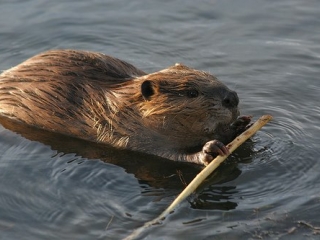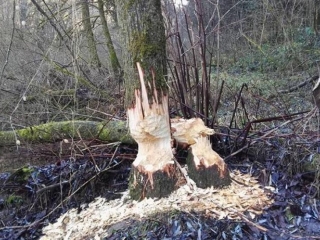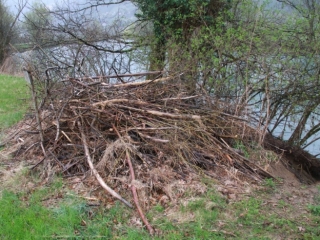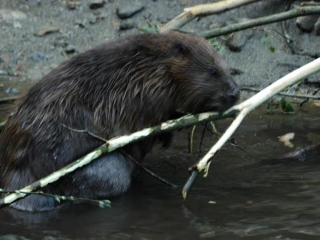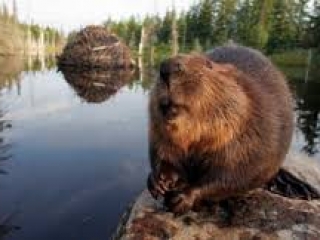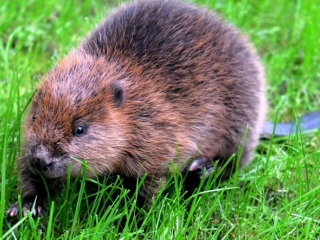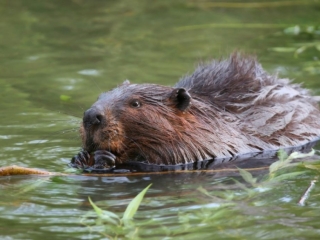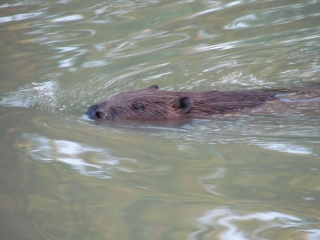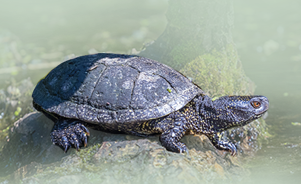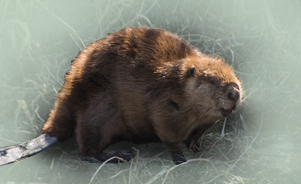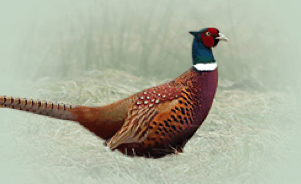The Eurasian Beaver or European Beaver Castor fiber
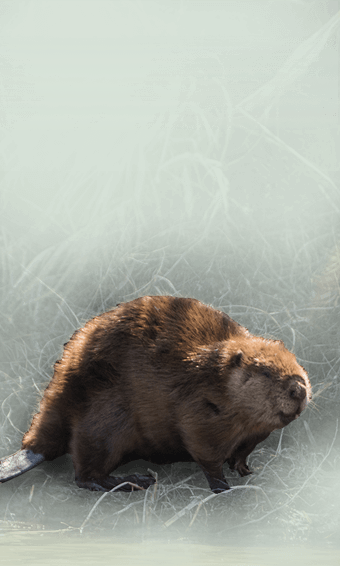
Features
The Eurasian beaver or European beaver is the second largest rodent in the world.
| Species | Mammal |
| Living space | Lake, Rivers, Streams, Swamp |
| Size | 80 to 105 cm |
| Weight | up to 30 kg |
Specialty habitat
Description
The Eurasian beaver or European beaver is characterized by a flat, flaky tail, a swim skin between the toes of the hind legs, and large incisors. They are half aquatic animals with a spindly shaped body and webbed skin between the toes of the hind legs. Their slender tail, which is back-abdominal, flattened and flaky, is intended for steering and swimming. When diving, the auditory canal and nostrils are closed and the eyes are covered with a distinct transparent membrane. The throat squeezes together immediately at the base of the tongue, and the lips tighten close to the incisors. That is why the beaver can easily chew underwater. On land, this animal is slow and clumsy. Beavers communicate with each other through the emission of odors and also by slapping their tails on the water. Such behavior is most common in adult animals. The slaps alert any other members of the group to danger so that they can all rapidly sink into the depths of the river. The sound itself may also scare predators. By building, beavers change the appearance of the landscape. Digging a canal is the simplest form of construction work. The beavers take away mud and other sediment from the bottom of shallow streams or swampy trenches with their forelegs and push it aside. This behavior is most pronounced in the summer when the water level is low. All of the families are involved in the digging. They build dams through streams to stave off water using mud, stones, sticks and branches. The male will defend his territory (up to 40 square kilometers) by marking it with faeces. Mating is not season specific.The Eurasian Beaver or European Beaver
on the habitat Temenica
Its presence along the Temenica River can be spotted by observing the piled up branches, chewed out tree trunks and other traces along the banks of the Temenica.
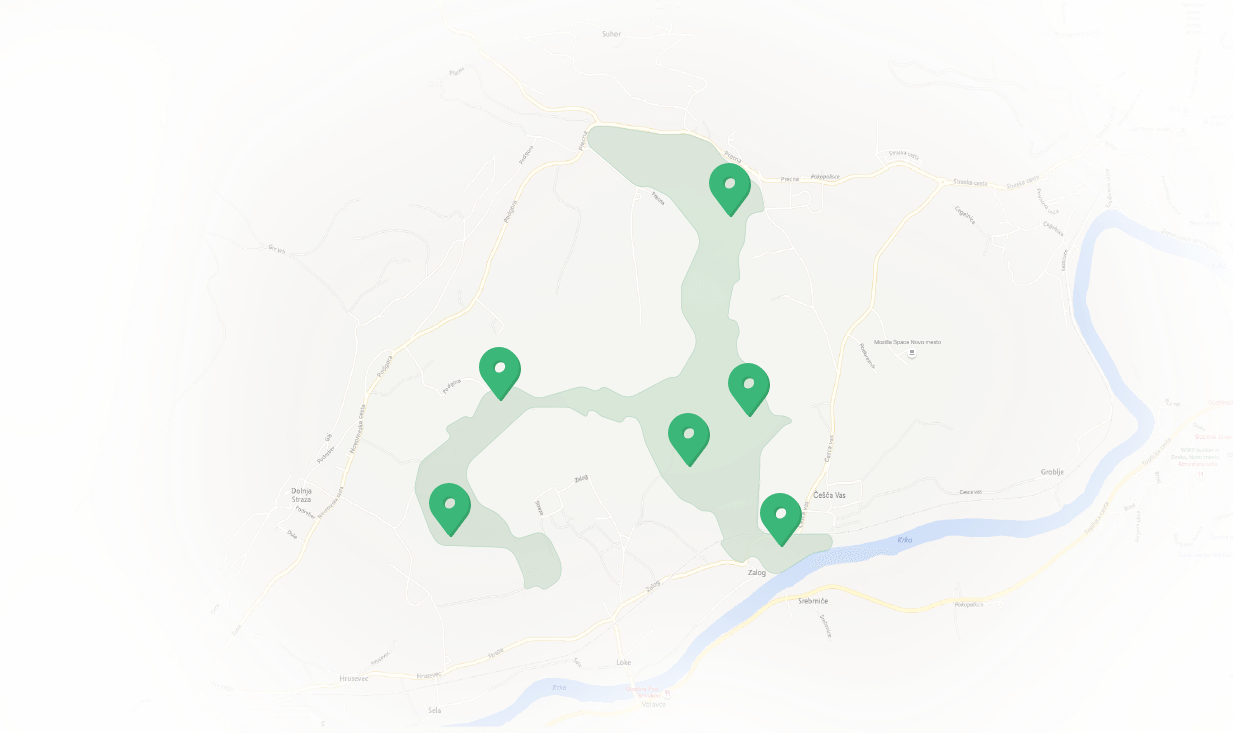
Features Temenica (3)
SPECIAL ogr.

